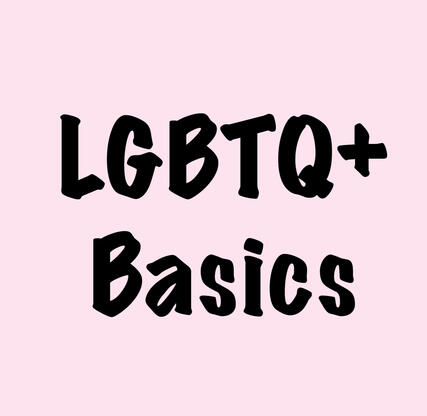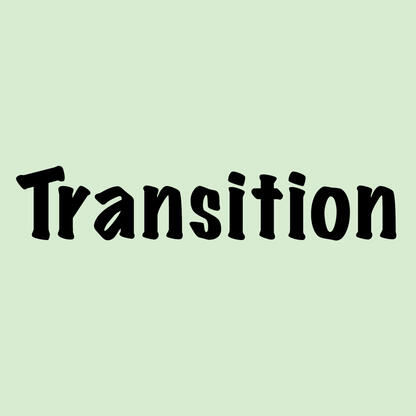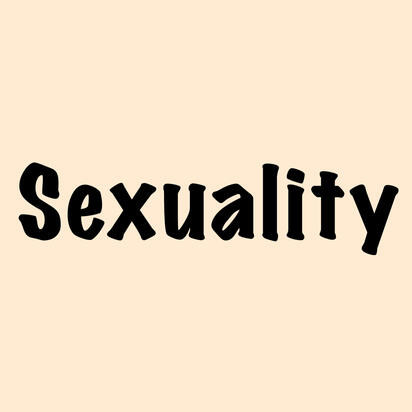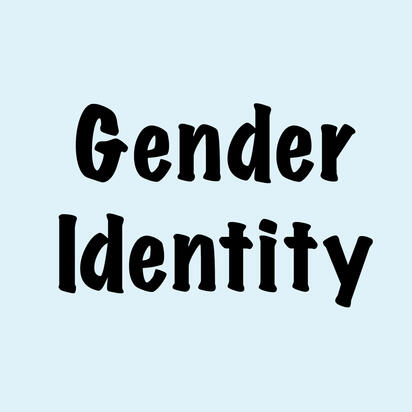ELCO PRIDE WEEK
Queer Lingo/Terms 101
The contents of this site have been adapted from
https://thesafezoneproject.com/resources/vocabulary/
https://www.thetrevorproject.org/resources/
https://kidshelpline.com.au/teens/issues/lgbtiq-ultimate-dictionary
Sexuality
Aromantic: Experiencing little/no romantic attraction to others and/or having lack of interest in romantic relationships/behavior. Often shortened to "Aro"Asexual: Experiencing little/no sexual attraction to others and/or having lack of interest in sexual relationships/behavior. Often shortened to "Ace"Bisexual: Being romantically and/or sexually attracted to more than one gender. Often shortened to “Bi”Demiromantic: Feeling sexual attraction to others, but only experiencing romantic attraction when they have a deep connection with the personDemisexual: Feeling romantic attraction to others, but only experiencing sexual attraction when they have a deep connection with the person. Part of the asexual spectrumGay: Experiencing attraction solely to members of the same gender. Can also be used as an umbrella term to refer to the whole queer community, or as an identity label for any individual who is not straightHeterosexual: Experiencing romantic/sexual attraction solely to members of a different gender. Usually known as “Straight”Homosexual: Experiencing romantic/sexual attraction primarily to members of the same gender (Can be an umbrella term)Lesbian: Someone who does not identify as a man that is solely romantically and/or sexually attracted to womenOmnisexual: Being romantically and/or physically attracted to all genders/expressions, while possibly having gender preferencesPansexual: Being romantically and/or physically attracted to all genders/expressions, not in a gender-bound way. Often shortened to “Pan”Polyamorous: Someone who has/is interested in having consensual relationships with multiple people/having multiple partners. Often shortened to “Poly”
LGBTQ+ Basics
Ally: A person who actively supports and accepts the LGBTQ+ community. It includes straight, cisgender, and cishet allies, as well as members of the LGBTQ+ community that support other groups in the umbrellaCishet: Someone who is both cisgender and heterosexual/straightCloseted: Not being “out” to others about their gender identity and/or sexuality. This is often called “In the Closet”, and may be by choice, out of fear, etc. You can be closeted to yourself or to othersComing Out: When one accepts to themselves/shares to others what their sexuality and/or gender identity isDrag: Dressing in typically gendered clothing/acting in a typically gendered way as part of a performanceGender Binary: The idea that only two genders exist and that everyone must fit into one of those categoriesGender Expression: How someone conveys their gender, often through clothing, hairstyles, mannerisms, etcGender Identity: How one perceives their own gender and how they label themselves. This is not the same as assigned sex at birthHomophobia: An umbrella term for negative actions or attitudes (fear, discrimination, hate) that individuals have against LGBTQ people. They may also fear or disgust the idea of being seen as LGBTQ. An individual who acts like this is called “Homophobic”LGBTQ: A shorthand/umbrella term for all people who have a queer gender and/or sexualityMisgendering: Referring to someone with pronouns/gendered terms that do not reflect their gender identity. Can be done accidently, or on purposeNeopronouns: Alternative pronouns that fit outside of the gender binary but are used in the same way as common pronouns. Some examples are xe/xem or zi/zirOuting: Revealing one's gender identity and/or sexuality without their permissionPronouns: Words to refer to a person in conversation/sentences. Pronouns can fit in the gender binary, or go outside of it. They are chosen by each individual, similar to gender identity. People can go by one pronoun (such as she/her), or by multiple (such as they/she). Some individuals don’t want to have pronouns assigned to them, and prefer to only be referred to by nameQPOC/QTPOC: Abbreviations for “Queer people of color” and “Queer and/or Trans people of color”Queer: An umbrella term to describe people that don’t identify as heterosexual and/or cisgender. Can be used interchangebly with “LGBTQ”Questioning: When an individual is unsure/exploring their gender identity and/or sexualitySexuality: An term used to define an individuals romantic and/or sexual interest to different gender identitiesUnlabeled: Someone who does not want to have any sexuality and/or gender identity assigned to them. They may be undecided, or they may just not feel the need for a label
Gender Identity
Agender: Refers to a person who does not identify with any genderAndrogyny: Gender expression that has elements of both masculinity and femininity, while being neither specifically.Bigender: Having two different gender identities and fluctuating between them, or possibly between a combination of themCisgender: Identifying with the gender that you were assigned at birthDemiboy: When one’s identity is only partly male, regardless of their assigned gender at birth. They may or may not also identify as another genderDemigirl: When one’s identity is only partly female, regardless of their assigned gender at birth. They may or may not also identify as another genderEnby: Another term sometimes used for/by nonbinary people to refer to their gender identityFemme: Feminine-presenting queer people. They identify as feminine either physically, emotionally, or mentally.Gender-fluid: Moving between two or more different gender identities- such as male, female, or a mixture of the two. They may also identify under the transgender or nonbinary umbrellaGender non-conforming: A non-traditional gender expression/presentation, such as a masculine woman, feminine man, or a gender identity outside of the gender binary. Sometimes shortened to “GNC”Genderqueer: When your gender does not fit within the gender binary of man/woman. May also be used as an umbrella term for gender non-conforming/non-binary identitiesMasc: Masculine-presenting queer people. They identify as masculine either physically, emotionally, or mentallyMx: A gender-neutral alternative used to replace terms such as Mr. or Mrs. that is often used by people outside the gender binaryNonbinary: Identifying your gender as something other than male or female (outside of the gender binary). People may call themselves nonbinary on it’s own, or nonbinary can be used as an umbrella term for other gender identities such as gender-fluidTransfeminine: Individuals who were assigned male at birth but identify with femininity. They may consider themselves a transwoman, demigirl, or something else outside the gender binary. Often shortened to “Transfemme”Transmasculine: Individuals who were assigned female at birth but identify with masculinity. They may consider themselves a transman, demiboy, or something else outside the gender binary. Often shortened to “Transmasc”Transman: A label sometimes used by female-to-male transgender peopleTranswoman: A label sometimes used by male-to-female transgender people
Transition
AFAB: Someone who was assigned female at birth. Often used when a person’s gender identity is different from the sex they were assigned at birthAMAB: Someone who was assigned male at birth. Often used when a person’s gender identity is different from the sex they were assigned at birthBinder: A garment used to constrict breasts for a flatter appearance, commonly used to lessen gender dysphoria by transgender and nonbinary people, or to look androgynes.Bottom surgery: Gender-affirming genital surgery. Can be done to either assigned sex at birthFTM: Being assigned female at birth, but identifying your gender as maleFTNB: Being assigned female at birth, but identifying your gender as nonbinaryGender Dysphoria: When someone identifies with a gender other than the one they were assigned at birth and is uncomfortable with their assigned sex/bodyHRT: Hormone replacement therapy, also known as transgender hormone therapy or gender-affirming hormone therapy. It’s when sex hormones and other hormone medications are taken by a transgender individual to help them medically transition to align with their gender identity. Masculine HRT is usually referred to as testosterone or “T”, and feminine HRT is usually referred to as estrogen. This is also used by intersex people.Intersex: Being born with a combination of chromosomes, sex organs, and/or genitals that differ from the expected patterns of either male or femaleMTF: Being assigned male at birth, but identifying your gender as femaleMTNB: Being assigned male at birth, but identifying your gender as non-binaryPassing: Being perceived by others as the gender you’re aiming to present as. Usually used for when trans individuals are seen publicly as the gender they identify asPost-Op: A transgender individual who has finished medically transitioning to align their body better with the gender they identify asPre-Op: A transgender individual who has started or plans to medically transition to align their body better with the gender they identify asTop surgery: Getting surgery to remove breasts, most commonly done by transgender people that were assigned female at birthTransgender: An umbrella term for individuals whose gender identity does not match their sex assigned at birth. Often shortened to “Trans”Transphobia: The discrimination against and hatred/fear of transgender people and/or gender indentities outside the binary. Can be seen in society and in other members of the LGBTQ community. An individual who acts like this is called “Transphobic”Transitioning: The process of a transgender person changing parts of themself (such as pronouns, appearance, name, or making physical changes with HRT or surgery) to better match their gender identity



